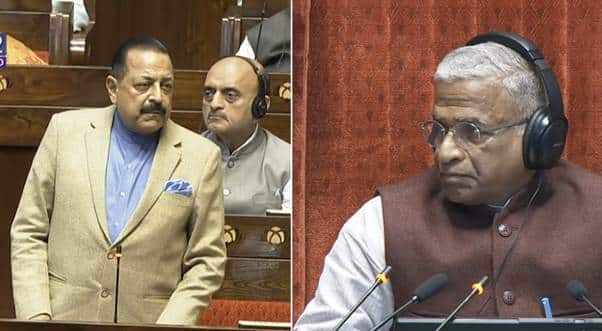India’s Enhanced Earthquake Preparedness

India has made significant strides in disaster preparedness, particularly in earthquake management. Union Minister Dr. Jitendra Singh recently addressed the Rajya Sabha, highlighting the country’s robust strategies to mitigate seismic risks. He emphasized the progress made over the years, especially in high-risk regions like Gujarat, Uttarakhand, and the Himalayan belt. This article delves into the key initiatives and strategies that have been implemented to enhance India’s earthquake resilience.
Historical Context and Institutional Framework
The foundation of India’s disaster management framework can be traced back to the aftermath of the devastating earthquakes in Gujarat. Following these events, the Gujarat Disaster Management Committee was established, marking a pivotal moment in the country’s approach to disaster preparedness. At that time, Narendra Modi served as the Chief Minister of Gujarat. His leadership inspired the creation of the National Disaster Management Committee in 2005. This committee aimed to streamline disaster response efforts across the nation.
Furthermore, the Institute of Seismological Research was established in Gujarat, which later led to the formation of the National Centre of Seismology. These institutions have played a crucial role in reinforcing India’s scientific approach to earthquake preparedness. Over the last decade, the number of seismic observatories has increased dramatically. In 2014, there were only 80 observatories, but today, that number has surged to 168. This expansion has significantly improved the country’s monitoring and response capabilities, surpassing the progress made in the previous 70 years.
Preventive Measures and Community Engagement
In earthquake-prone areas such as Kutch, Bhuj, Uttarakhand, and the Himalayan belt, India has adopted several preventive measures. Dr. Jitendra Singh noted that in 2016, Prime Minister Narendra Modi proposed a 10-point agenda for disaster risk reduction. This agenda aligns with the Vision Document 2047, which envisions an earthquake-resilient India. Regular mock exercises are conducted to prepare communities for potential seismic events.
Retrofitting existing structures has become a major focus following the Bhuj and Kutch earthquakes. With nearly 60% of India’s geographical area prone to seismic activity, strict enforcement of building codes is essential. Old buildings are being retrofitted to withstand earthquakes. Notably, institutions like AIIMS New Delhi and Bhuj hospitals were among the first to undergo restructuring. Moving forward, schools and other critical infrastructure will also be included in these retrofitting initiatives. Financial grants have been allocated to support these efforts, ensuring that communities are better prepared for future earthquakes.
Public Awareness and Technological Advancements
Public awareness campaigns are vital in enhancing earthquake preparedness. Dr. Jitendra Singh highlighted initiatives such as ‘Aapda Ka Samna’ on Doordarshan, which aims to educate citizens about disaster preparedness. Mock drills and the ‘Homeowners Guide for Earthquake and Cyclone Safety’ provide essential safety measures to the public. In 2021, simplified earthquake safety guidelines were introduced, offering comprehensive specifications for building infrastructure safety under the Building Code of India.
In the Himalayan region, which is particularly vulnerable to earthquakes, early warning systems and a well-defined disaster response framework have been established. The government has prioritized public awareness, ensuring that citizens are informed about safety protocols. Additionally, the Northeast region has received special attention regarding earthquake preparedness. Several observatories have been installed to monitor seismic activities, and initiatives launched by the Modi government focus on strengthening disaster resilience in this area.
Risk Management and Future Commitments
Addressing the issue of infrastructure insurance against earthquake-induced damage, Dr. Jitendra Singh introduced the ‘Risk Transfer Mechanism.’ This mechanism assesses disaster-related damages and ensures insurance coverage for affected areas. Comprehensive guidelines have been established, and relevant agencies are responsible for strict adherence to these protocols.
The Minister reiterated the government’s commitment to enhancing disaster preparedness and resilience across India. By leveraging advanced technology, public awareness, and proactive policy measures, the government aims to mitigate earthquake risks effectively. As India continues to strengthen its disaster management strategies, the focus remains on building a safer and more resilient nation for future generations.
Observer Voice is the one stop site for National, International news, Sports, Editor’s Choice, Art/culture contents, Quotes and much more. We also cover historical contents. Historical contents includes World History, Indian History, and what happened today. The website also covers Entertainment across the India and World.

